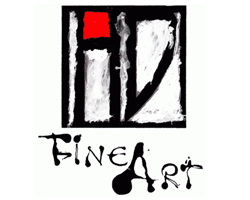Product Description
Alyssa Monks “Push” Oil on Canvas 2006


ALYSSA MONKS (b.1977) USA
Push 2006
Oil on canvas
Signed: Alyssa Monks 2006 (on lower back of canvas)
Exhibited: DFN Gallery, New York 2006
Illustrated: American Art Collector, May 2006, p. 155
H: 30” x W: 56”
“Push” is somewhat of a response to the long tradition of bathtub paintings where a nude woman is displayed. However, the figure is me, the painter, so that the subject is also the artist, juxtaposing the objectification of women in that tradition. Also, the figure wears a black negligee and red lipstick, white makeup gently drips down the cheek, closing the door on naturalism.
At the New York Academy of Art, Alyssa Monks studied with Vincent Desiderio, Wade Schuman, Brenda Zlamany, John Jacobsmeyer, Harvey Citron, Deane Keller, Edward Schmidt, Steven Assael, Lisa Bartolozzi, Patrick Connors, Peter Cox, Jon DeMartin, Leonid Lerman, and Hong Nian Zhang. Alyssa’s sensibility of paint and color allows one to be seduced into the illusion of each image. Striving for anatomical and realistic accuracy, it is her intention to elicit a serious confrontation. The work requires attention to detail and a slow and rich execution. It is this artist’s concern to visually relate the contemporary human experience with sensitivity, empathy, and integrity.
Alyssa Monks “Push” Oil on Canvas 2006
WES WILSON USA
Grateful Dead, Big Mama Mae Thornton at the Fillmore December 9-11, 1966
Marked: © 1966 Wes Wilson 41, printing by West Coast Lithograph Co. SF
H: 21 7/8” x W: 14”
JEFFREY HARTMAN USA
“Motobecane” 1978
Oil on canvas
Signed: “Jeffrey Hartman ‘78”, “© 78 HARTMAN” (on the back)
Framed H: 26 1/2” x W: 18 1/2”
Price: $18,000
Belgian art dealer Isy Brachot coined the French word Hyperréalisme, meaning Hyperrealism, as the title of a major exhibition and catalogue at his gallery in Brussels in 1973. The exhibition was dominated by such American Photorealists as Ralph Goings, Chuck Close, Don Eddy, Robert Bechtle and Richard McLean; but it included such influential European artists as Gnoli, Richter, Klapheck and Delcol. Since then, Hyperealisme has been used by European artists and dealers to apply to painters influenced by the Photorealists. However, Hyperrealism is contrasted with the literal approach found in traditional photorealist paintings of the late 20th century. Hyperrealist painters and sculptors use photographic images as a reference source from which to create a more definitive and detailed rendering, one that often, unlike Photorealism, is narrative and emotive in its depictions. Strict Photorealist painters tended to imitate photographic images, omitting or abstracting certain finite detail to maintain a consistent over-all pictorial design. They often omitted human emotion, political value, and narrative elements. Since it evolved from Pop Art, the photorealistic style of painting was uniquely tight, precise, and sharply mechanical with an emphasis on mundane, everyday imagery. Hyperrealism, although photographic in essence, often entails a softer, much more complex focus on the subject depicted, presenting it as a living, tangible object. These objects and scenes in Hyperrealism paintings and sculptures are meticulously detailed to create the illusion of a reality not seen in the original photo. That is not to say they’re surreal, as the illusion is a convincing depiction of (simulated) reality. Textures, surfaces, lighting effects, and shadows appear clearer and more distinct than the reference photo or even the actual subject itself.
